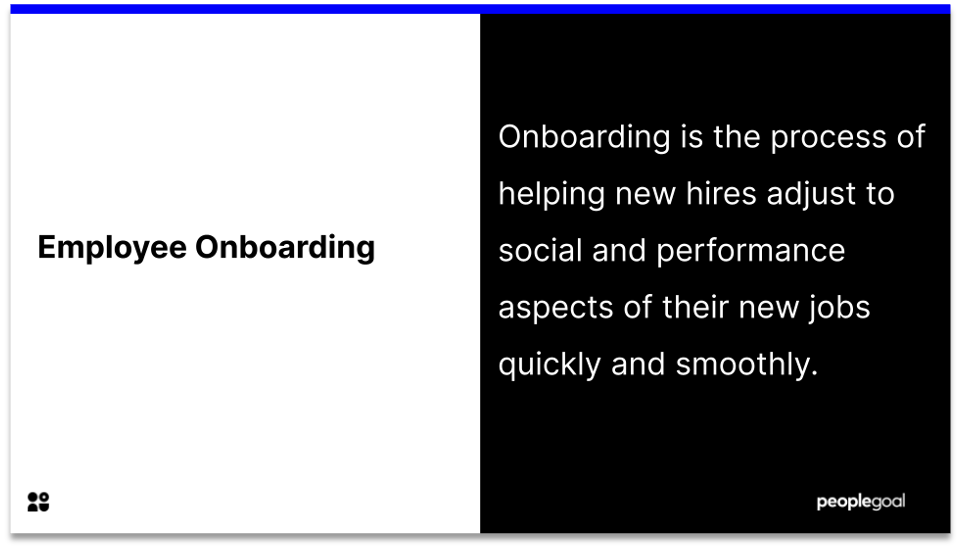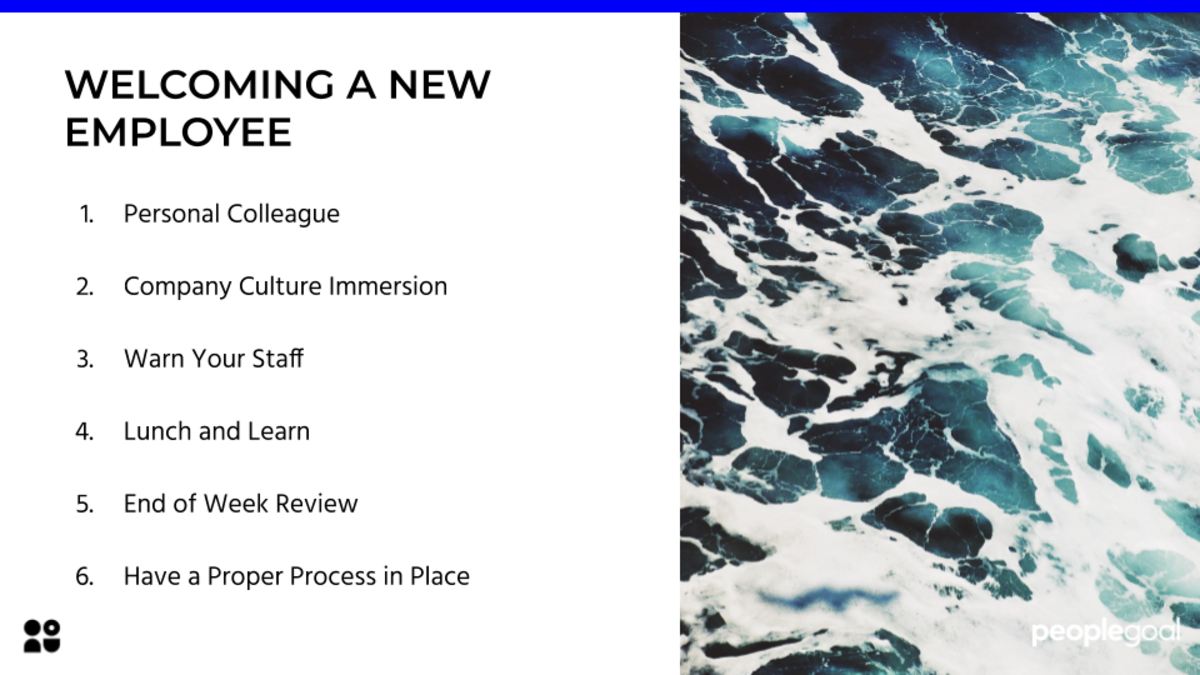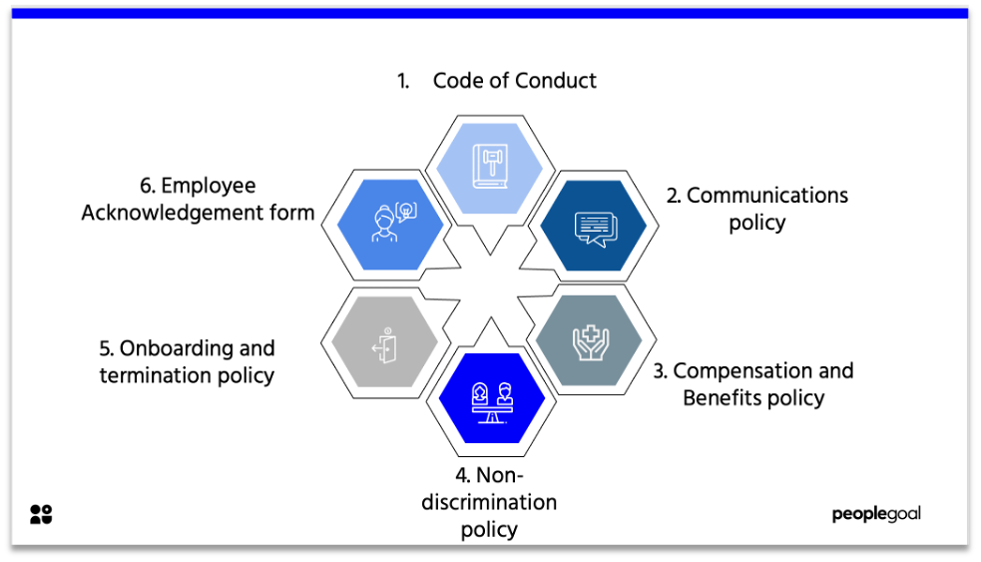What is Onboarding?
As any new hire embarks on the process of joining a company they will want to learn about the company culture, their colleagues and their own role in the organization. Onboarding provides the tools to cover all of these queries. The employee onboarding process facilitates new hires in becoming emotionally, physically and professionally integrated into the established culture and operations of their new employer.
Onboarding new employees needn’t be a hassle. When done properly, the employee onboarding process has significant benefits for employee engagement and performance. An employee’s experience of work hinges on the proficiency of their onboarding process. Ensuring that an employee feels welcomed as a member of the team will significantly improve retention rates. The importance of this is staunchly echoed by Harvard Business Review, which reports that 20% of staff turnover occurs in the first 45 days of employment.
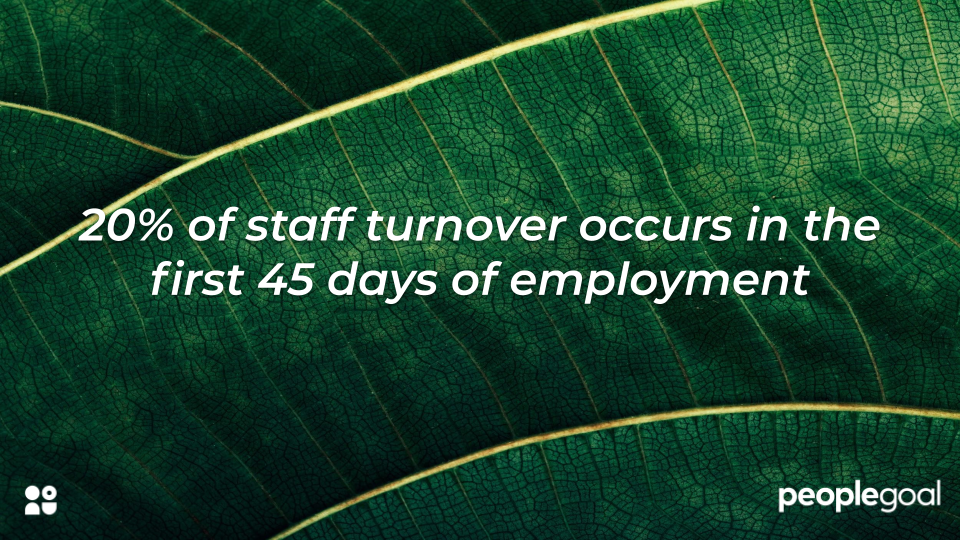
An effective onboarding process is fundamental to the continued development and commitment of any employee. In order to guarantee that a new hire will be with you after 12 months, they must feel welcomed and motivated by their work within the initial process of being onboarded.
The Onboarding Process
The sooner that an employee feels welcomed as a part of the team, the better. Once an employee is recognized as a fully onboarded member of the team, they will be able to take on more roles and responsibilities. HR professionals are responsible for consolidating an effective onboarding process. This process must give a clear representation of the expectations of the employee.
A precise and informative employee orientation is vital to presenting an employee with the necessary guidance to approach their new role. Without preparing the new hire for their role, it is highly likely that they will become disengaged. Promoting company culture and outlining the specifics of their role is crucial to encouraging the employee to better engage with their work.
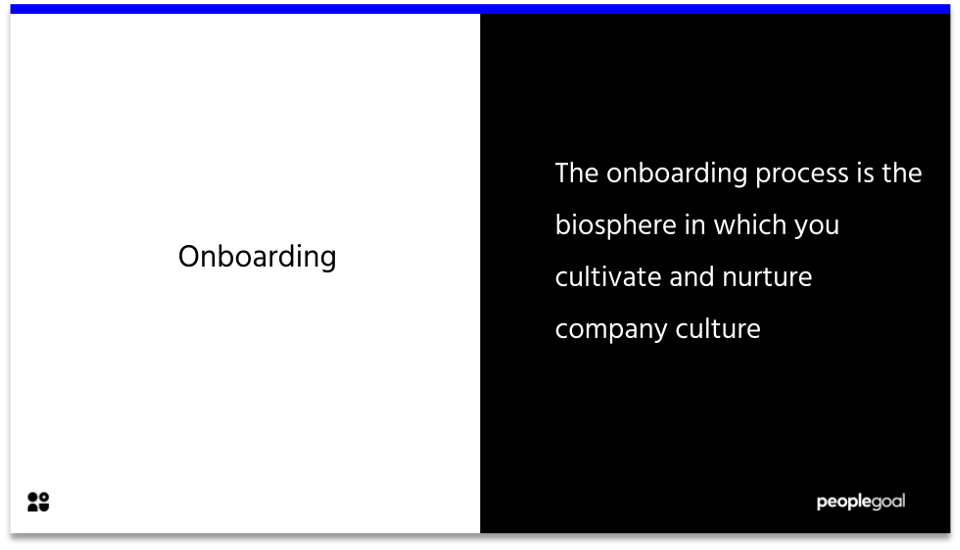
The onboarding process will give purpose to the employee’s work. Without an understanding of the importance of their contribution, the employee may struggle to remain motivated in their role in the long term.
Looking at the most effective approach to the employee onboarding process, the optimal onboarding strategy must entail a comprehensive breakdown of the employee’s role within the organization. Additionally, a manager must be assigned to oversee and confirm that the employee has truly completed the various tasks for their onboarding. This ‘onboarding manager‘ will be responsible for going through the employee’s onboarding checklist and running routine check-ins to track their progress.
It is important for a manager to be proactively engaged in an employee’s onboarding. This is not only beneficial for the employee to have a reliable source for information, but it also distributes the responsibility of completing the onboarding process across the employee and the manager. With a consistent and reliable channel for communication, the employee can iron out any issues or difficulties that they are experiencing during the initial phases of being with the company.
Great Onboarding Promotes Great Company Culture
Whilst a ‘swim or sink’ approach might appear to be a more efficient onboarding strategy, in most cases this approach is in fact detrimental. Leaving employees with the duty of defining and establishing their own roles and responsibilities is seen to take up less time than running an onboarding process but this simply isn’t the case.
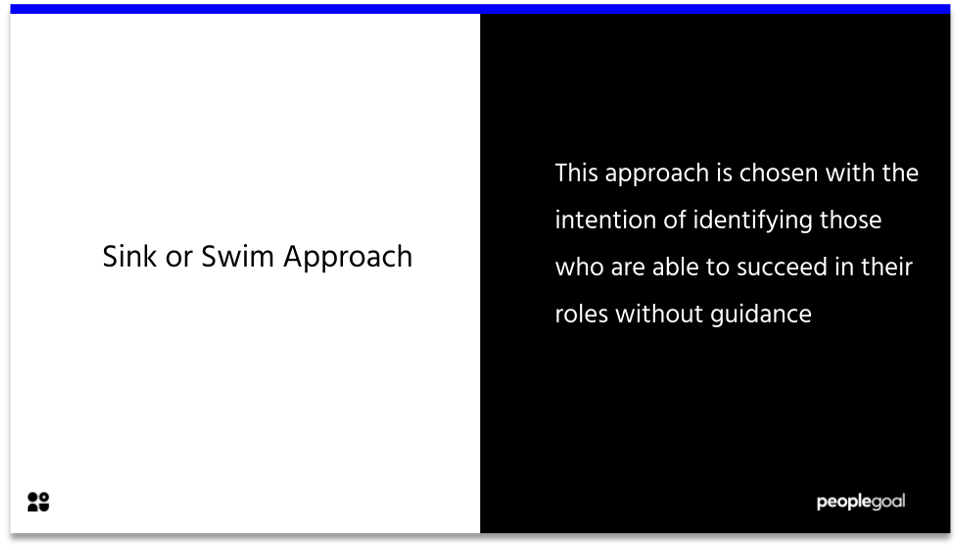
An employee that lacks support when first joining a company is far more likely to become disengaged. This often stems from being overwhelmed by the uncertainty of their position within the organization.
Low levels of employee engagement lead to higher turnover rates and so effectively, the onboarding process is set back to square one.
In contrast, when an organization invests some time into the employee onboarding process they are far more likely to become engaged with their work as they have had opportunities to learn about the company culture and their team members. Employee orientation is vital to providing the employee with a genuine opportunity to succeed with the company.
An effective onboarding process will lead to higher rates of employee performance. Increased productivity will also have better employee retention rates. When onboarding new employees, it is vital to make a great first impression. A study by the Aberdeen Group found that 86% of employees decide if they will stay with a company long-term within the first 6 months of employment.
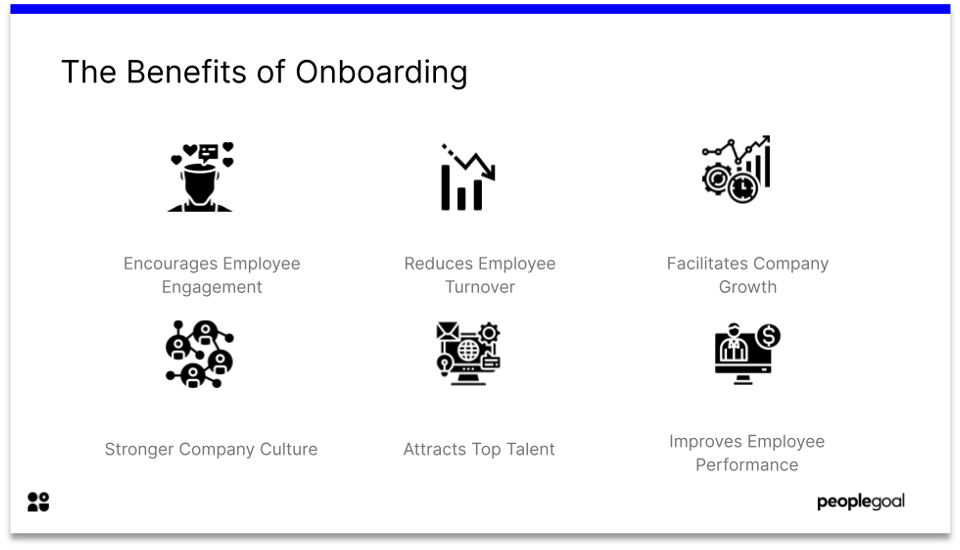
Evidently, when an employee feels that they make a good fit within the company culture they are far more likely to commit to the organization. It is only through a successful onboarding program that an employee can quickly determine if their values align.
By skipping the onboarding process, a company risks lower levels of employee engagement and retention rates. Onboarding does not have to be a tedious procedure. It is a great opportunity for human resources management to promote better employee performance and strong working relationships.
Benefits of Onboarding
- Improves Employee Performance
- Encourages Employee Engagement
- Facilitates Company Growth
- Attracts Top Talent
- Reduces Employee Turnover
- Stronger Company Culture
How to Run Onboarding with PeopleGoal
As we embark on a journey with any new employee, we must be committed to ensuring that this new hire feels welcomed as part of the team. It is also important to support the new hire as they adopt a fuller understanding of what their role is within the organization. By learning and aligning oneself with a company culture there is a greater chance that an employee will be motivated to stay with the team long-term.
In the steps below, we are following the 30/60/90 day onboarding approach. Through this approach, within 3 months, any new hire should be completely onboarded and prepared to work independently towards their individual professional goals.
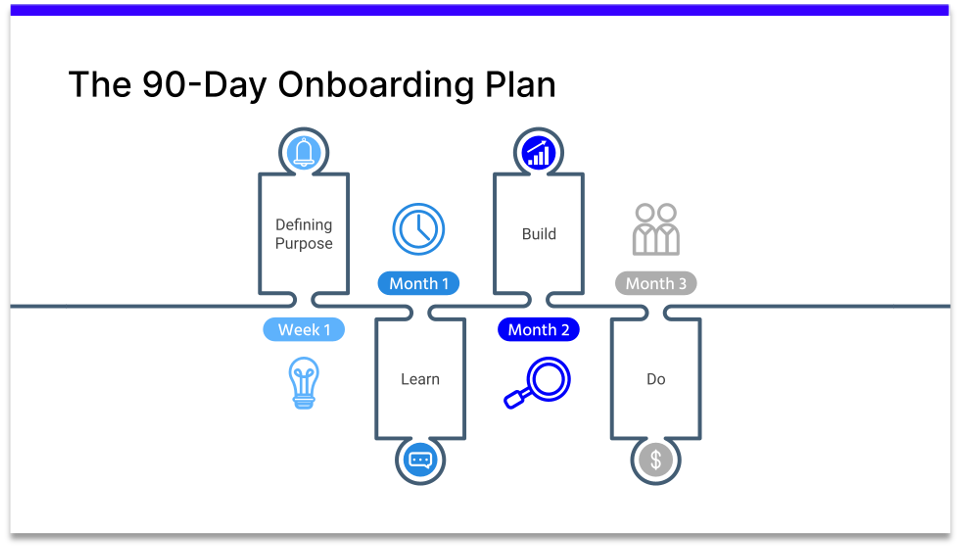
How to use the Onboarding Checklist
How does the app work?
The Onboarding Checklist provides managers with the necessary tools to track and record an employee’s progression through the onboarding process. With milestones set every 30 days for the first 90 days after joining the company, this checklist will enable the manager to support an employee as they are learning the ropes in their new position.
At each of these milestones, the manager will be able to update the checklist to confirm that the requirements have been met. Moreover, at these milestones, check-ins will also be scheduled for the manager and new hire to discuss the onboarding experience so far. Here the employee can give feedback on anything they need to. Likewise, the manager will be able to assist the employee with any queries, from how to improve their performance to where to find particular information.
Overview of the 3-month timeline
Day 1: New Hire gets to know the ropes
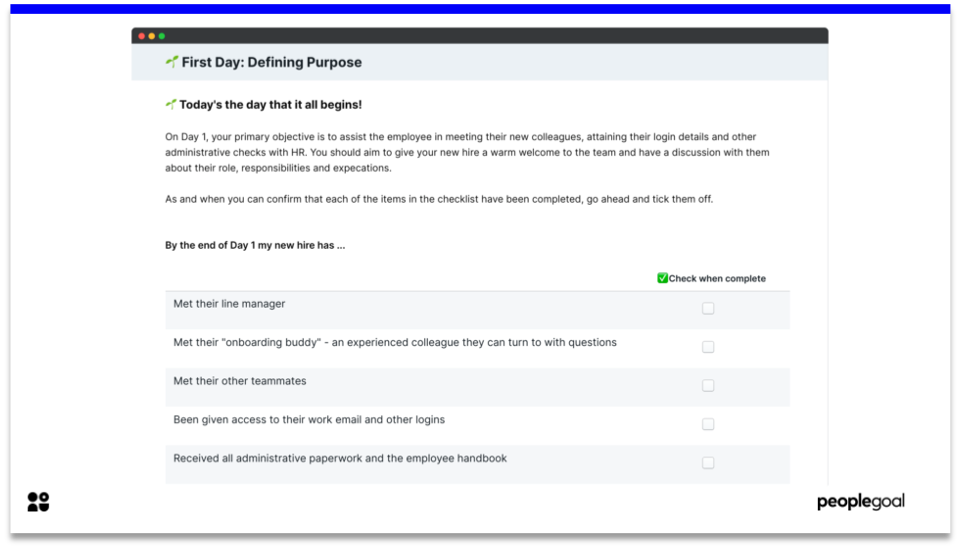
Introductions and logins are given. The employee will start to be informed of their responsibilities and the organization’s expectations. First day nerves are a very real thing. Consequently, as the new hire is first getting to know their colleagues and responsibilities, take some time to put them at ease and help them through the work.
It can be really helpful to provide the new hire with a plan for the day so that they can better understand what to expect from their first day of work in the office (virtual or physical).
Week 1: New Hire will start to define their purpose
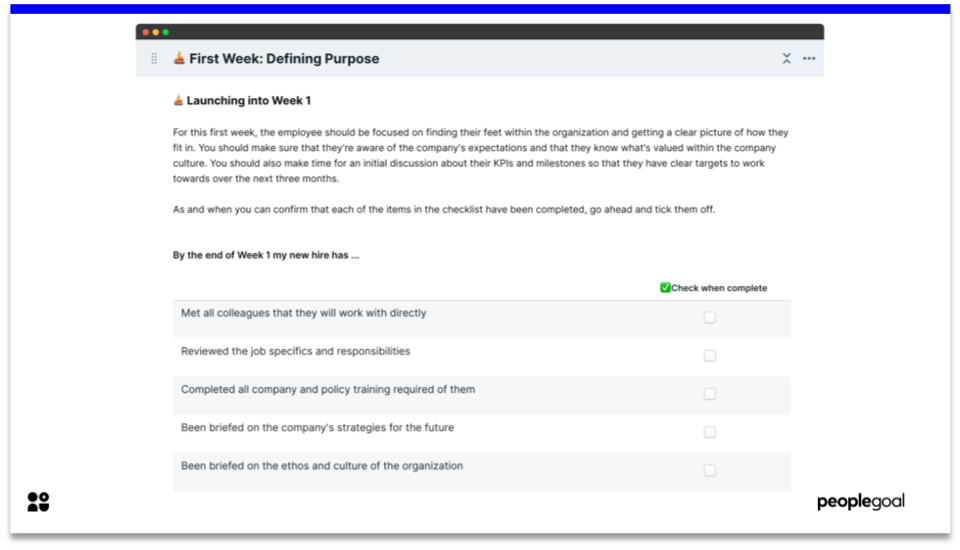
By the end of Week 1, the employee should have a strong understanding of their role within the company and the culture of work. Learning and training programs will have begun and the employee should have had the opportunity to meet all of the individuals that they will be directly collaborating with.
The upcoming milestones, objectives and strategies will have been communicated to the employee so that they are fully prepared to begin working towards fulfilling them.
In order to give the employee as much assistance as possible, the manager will schedule a time to have a check-in at the end of the first week. This meeting will provide the employee with the opportunity to air any of their concerns. Moreover, this meeting will be beneficial for the manager to set out a structure for the following months of onboarding. Through the check-in, the manager will be able to determine how happy the employee is to be working for the company.
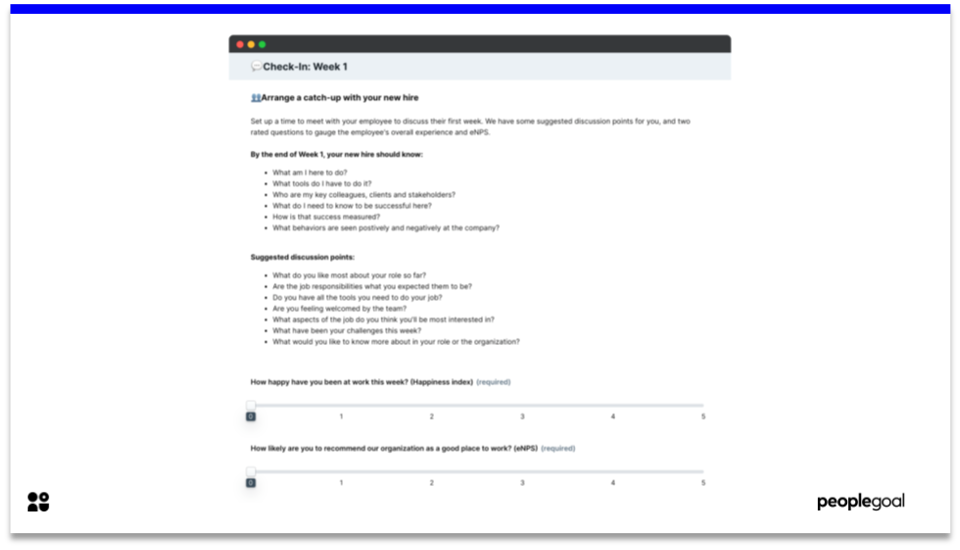
A list of questions and discussion points are provided that will enable the manager to easily guide the conversation and establish just how well the employee is getting on in their new role.
Month 1: Monitoring the New Hire’s learning
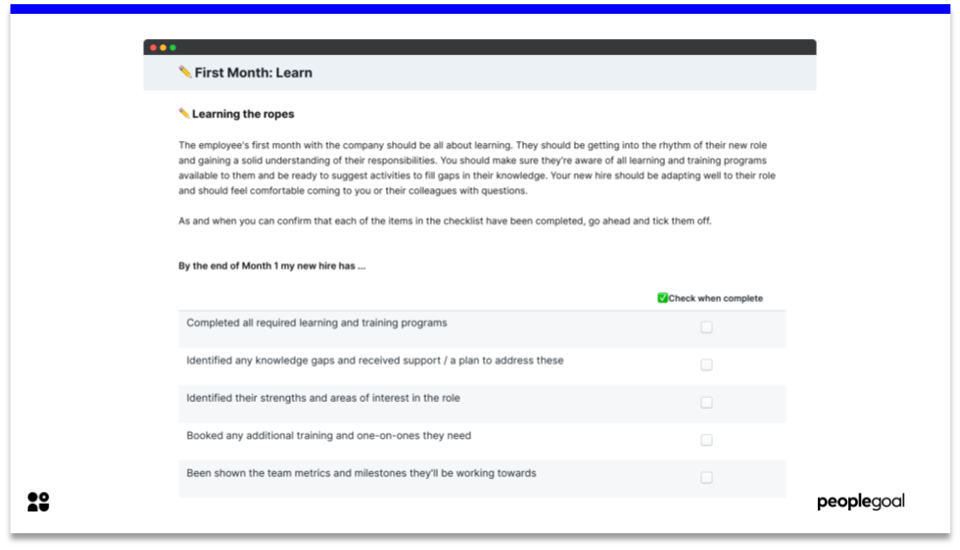
Within the first month, the new hire should be getting more into the rhythm of their new role. They will have hopefully conducted the majority, if not all, of their learning and initial training programs by now. It is on the manager to ensure that the employee is well adapted to their new position.
Any problems that have been flagged up can be addressed in the 30-day check-in. Continued learning programs should be set out for the employee and depending on how well they have performed, update their set objectives.
Month 2: Building on the New Hire’s learning
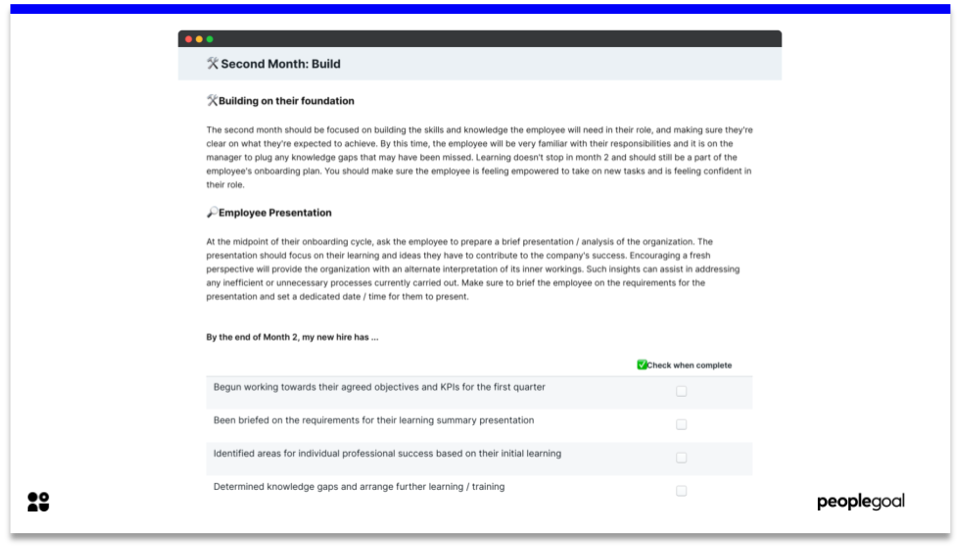
As the employee becomes more familiar with the organization, the second monthly check-in marks the mid-point of the employee’s onboarding process. By this point in the onboarding process, the employee will be very familiar with their responsibilities and it is on the manager to plug any knowledge gaps that may have been missed.
As they begin to enter their final chapter of the onboarding process, it is recommended that you arrange for the new hire to give a presentation to summarize their experience of the company so far. This presentation could reflect solely the onboarding experience or it could be drafted much wider for the new hire to give their analysis of the company as it stands. With a fresh perspective, their is potential to attain some great insights on how the company is performing which may reveal some areas for improvement.
Month 3: New Hire transitions from learning to doing
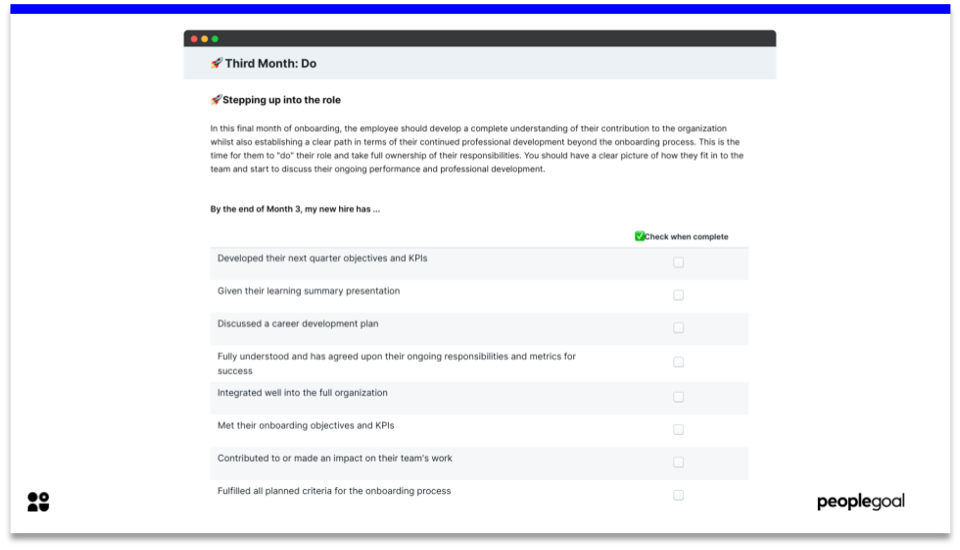
Just like that, we have reached the end of the onboarding process! In this final month of onboarding, the employee should have developed a complete understanding of their contribution to the organization whilst also establishing a clear path in terms of their continued professional development beyond the onboarding process.
The new hire will have also given their presentation, reflecting on their experience of the company so far. This is a very useful process that can help both the employee and manager to understand and confirm everything that the new hire has learned since joining the company.
At the end of the onboarding process, it is important to gather feedback directly from the employee. For this reason, the Onboarding Checklist will be shared with the employee and they will be required to complete a self-evaluation form. The responses to this evaluation form will indicate any difficulties or concerns to the manager. It is important to gather feedback from the employees themselves as this will give the most veritable reflection of the efficacy of the onboarding process.
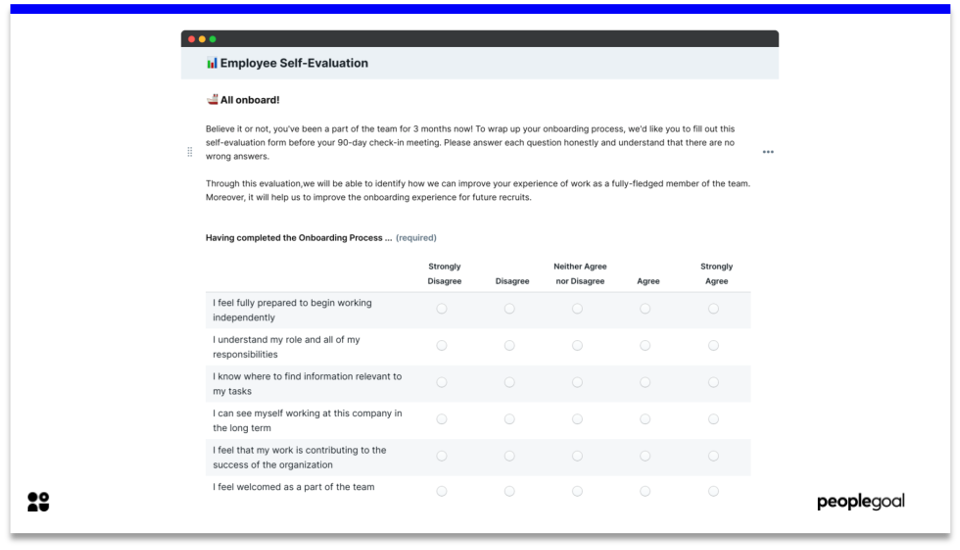
On top of the employee self-evaluation, the manager will also complete their own evaluation form about the employee. The responses from the two evaluation forms will then be used to inform the final onboarding check-in. It is important to understand that learning does not stop with the end of the onboarding process. Learning and development are a continuous endeavour that must be maintained throughout an employee’s career to promote sustained growth.
The manager must check that the employee has completed all aspects of the 90-day onboarding plan and confirm or act to rectify this. With this confirmation, the employee may continue in their position and work towards their established objectives as a fully onboarded part of the team.
All Onboard!
As the employee has reached the end of their onboarding process, it’s important to ensure that they have successfully transitioned to the continuous performance cycle.
In order to assist the employee, take some time to verify that they are prepared to step into the continuous performance processes. They may need to be incorporated into a regular check-in cycle or the next wave of performance reviews. Whatever needs to be done, it the responsibility of the manager to confirm that they have been transferred from the status of onboardeder to a fully fledged employee.
A record of the employee’s onboarding process should be stored and can even be used to improve the onboarding process for future new hires.
👉 Click here for a how-to guide on how to set up an effective performance management cycle
That’s your lot! Following this 30/60/90 day approach to onboarding will facilitate the new employee to develop a complete understanding of their roles and responsbilities within the organization. Additionally, it will present managers with further clarity as to how well employees have been trained and educated on the company culture and their expectations for work.
Ready to 3x Your Teams' Performance?
Use the best performance management software to align goals, track progress, and boost employee engagement.

